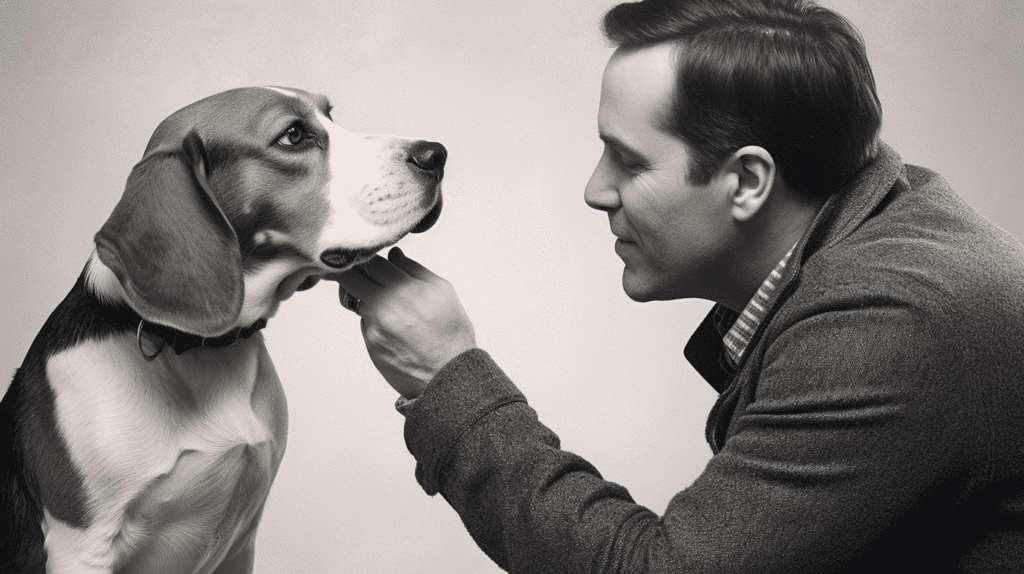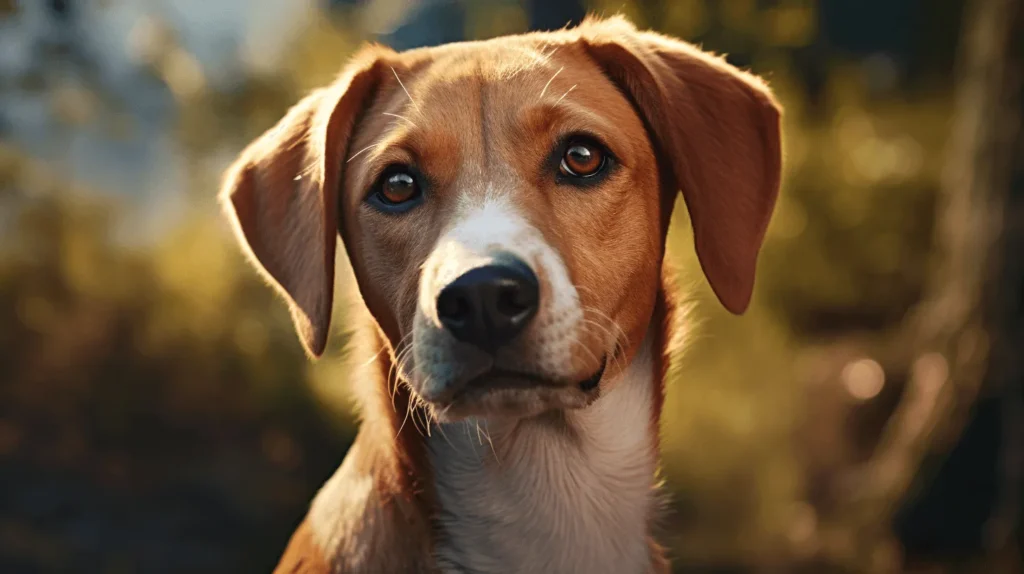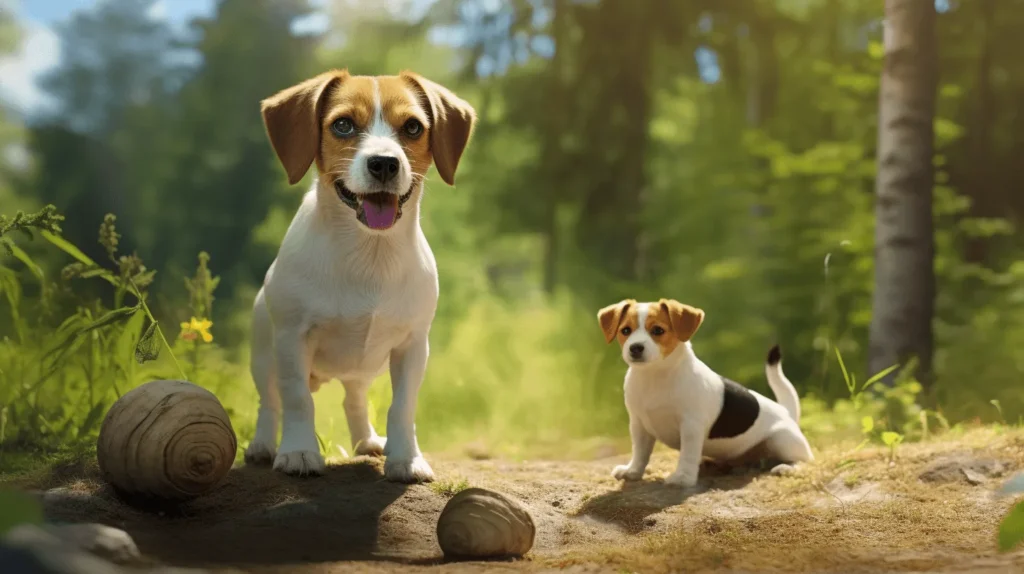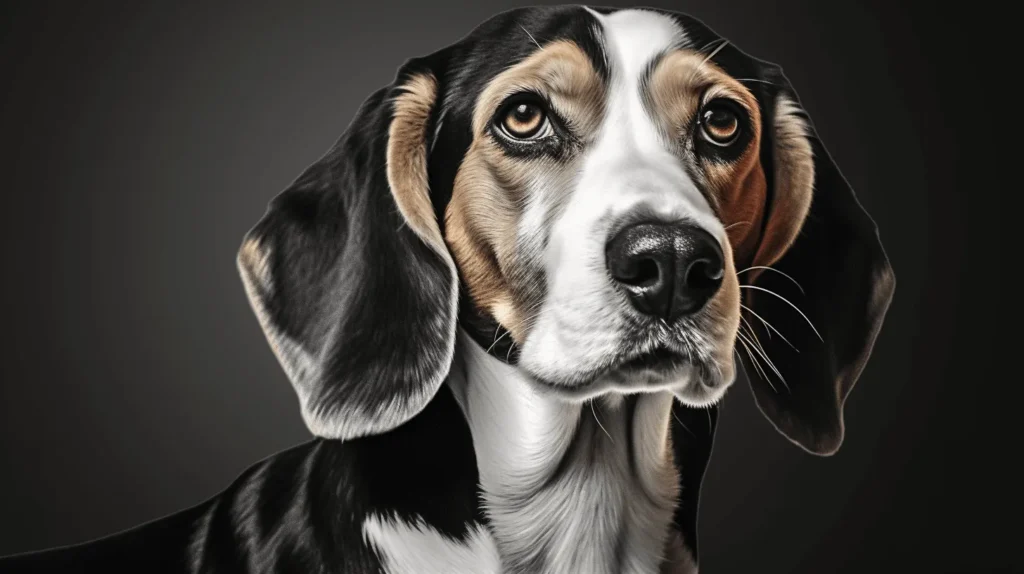Thinking of getting a big beagle? You’re about to find out all you need to know about the big beagle breed. Beagles are well-known for their friendly and playful nature, making them great family pets. While they are typically small to medium-sized dogs, there is also a larger variation known as the “big beagle“. We will explore the size, characteristics, care, and suitability of big beagles for families.
Beagles have been popular dogs for many years due to their lovable nature and adorable appearance. Their small to medium size makes them a great fit for families living in apartments or houses with limited space. However, there is also a larger variation of the breed known as the big beagle. These big beagles are known for their size and strength, which sets them apart from their smaller counterparts.
Contents
- 1 Size of Big Beagles
- 2 Big Beagle vs Pocket Beagles
- 3 Characteristics of Big Beagles
- 4 Care for Big Beagles
- 5 Suitability for Families
- 6 Temperament of Big Beagles
- 7 Health Issues Associated with Big Beagles
- 8 Exercise Requirements for Big Beagles
- 9 Living in Apartments
- 10 Compatibility with Other Pets
- 11 Adoption and Rescue
- 12 Final Thoughts On Big Beagle
Size of Big Beagles
Big beagles are a larger variation of the breed, and their size can vary. According to the American Kennel Club (AKC), beagles are classified into two size categories: 13-15 inches and under 13 inches. Big beagles would fall into the larger size category, with some individuals reaching heights above 15 inches.
Big beagles can weigh anywhere between 30 to 50 pounds, depending on their individual genetics and overall health. This larger size gives them a more imposing presence compared to their smaller counterparts. However, despite their larger size, big beagles still retain the same friendly and playful personality that makes the breed so beloved.
Another interesting aspect of big beagles is their ability to adapt to different living situations. For example, a big beagle living in a house with a backyard can enjoy the space to run and play freely, while a big beagle living in an apartment can still thrive with regular exercise and mental stimulation. This adaptability makes big beagles a versatile choice for families of different lifestyles.
Big Beagle vs Pocket Beagles
| Feature | Big Beagle (Standard) | Smaller Beagle (Pocket) |
|---|---|---|
| Height | 13-16 inches | Up to 13 inches |
| Weight | 20-35 lbs | 15-18 lbs |
| Lifespan | 12-15 years | 12-15 years |
| Exercise Needs | Moderate | Moderate, but less intense than the standard |
| Best Suited For | Families, hunters, active individuals | Apartment living, families with limited space |
Characteristics of Big Beagles
Big beagles share many characteristics with their smaller counterparts. They are friendly, playful, and curious dogs that form strong bonds with their human family members. Big beagles, like all beagles, have a solid build and the endurance required for hunting. They come in various coat colors, including the classic black, tan, and white combination.
One defining characteristic of big beagles is their deep bark. Unlike smaller beagles, big beagles have a louder and more resonant bark that can be heard from a distance. This makes them excellent watchdogs, alerting their owners to any potential intruders or unusual activity.
In addition to their bark, big beagles are known for their expressive eyes. Their large, round eyes give them a soulful and endearing look that is hard to resist. These expressive eyes are a characteristic trait of the breed and add to their overall charm.
Care for Big Beagles
Caring for big beagles is similar to caring for smaller beagles. Regular exercise is essential to keep them physically and mentally stimulated. Beagles are known for their high energy levels, so daily walks and playtime are important to prevent boredom and obesity. Additionally, big beagles have a dense double coat that requires regular brushing to minimize shedding and keep their coat healthy.
Proper nutrition is also crucial for the overall health and well-being of big beagles. It is important to provide them with high-quality dog food that meets their nutritional needs. Portion control is important as big beagles have a hearty appetite and are prone to weight gain. Obesity can lead to various health issues, so a balanced diet and regular exercise are essential for maintaining their ideal weight.
Regular veterinary check-ups are necessary to ensure that big beagles are in good health and to catch any potential health issues early on. Vaccinations, parasite prevention, and dental care are all important aspects of their overall care. It is also recommended to discuss with your veterinarian about additional health screenings that may be specific to the breed.
Suitability for Families
Big beagles, like all beagles, are generally well-suited for families. They are friendly and affectionate with family members, including children, and can make excellent playmates. However, it is important to supervise interactions between big beagles and young children, as with any dog, and teach children how to properly interact with and handle dogs. Proper socialization from a young age is also important to ensure that big beagles get along well with other pets in the household.
One example of big beagles’ suitability for families is their adaptability to different age groups. They have a natural affinity for children and are often patient and gentle with them. Big beagles form strong bonds with children and can be a source of comfort and companionship. However, it is important to teach children to respect the dog’s boundaries and not to pull on their ears or tail.
Families with older adults can also benefit from having a big beagle as a companion. Big beagles are known for their loyalty and can provide emotional support to their owners. They can also motivate older adults to stay active by encouraging daily walks and playtime.
Temperament of Big Beagles
Big beagles have a similar temperament to smaller beagles. They are known for their friendly and playful nature, which makes them great companions. However, beagles can also be stubborn at times, so consistent and patient training is necessary.
One aspect of the big beagle’s temperament that sets them apart from their smaller counterparts is their increased independence. While smaller beagles tend to be more clingy and dependent on their owners, big beagles are more self-reliant and can be more independent in their decision-making. This independence can sometimes lead to stubbornness during training, but with the right approach and positive reinforcement, big beagles can be trained to be well-behaved and obedient.
Despite their independence, big beagles are still social dogs that thrive on human companionship. They enjoy being part of the family and participating in activities together. Whether it’s going for a walk, playing fetch, or simply lounging on the couch, big beagles are happiest when they are included in the daily routines of their human family members.
Health Issues Associated with Big Beagles
While big beagles are generally healthy dogs, there are some health issues that can be more common in the breed. These include hip dysplasia and intervertebral disk disease. Regular veterinary check-ups and a balanced diet are important for maintaining their overall health and well-being.
Hip dysplasia is a condition where the hip joint does not develop properly, leading to pain and discomfort. Intervertebral disk disease is a condition that affects the spinal disks, leading to pain and mobility issues. While these conditions can occur in any beagle, big beagles may be more susceptible due to their larger size and weight. It’s important to monitor their weight, provide regular exercise, and seek veterinary care if any signs of discomfort or mobility issues are noticed.
Another health issue that big beagles may face is obesity. Beagles have a hearty appetite and are prone to weight gain if not properly managed. Obesity can lead to various health problems, including joint issues and heart disease. It is important to feed them a balanced diet, provide regular exercise, and monitor their weight to prevent obesity.
Exercise Requirements for Big Beagles
Big beagles have a moderate to high exercise requirement. Daily walks, playtime, and mental stimulation are important to keep them happy and healthy. Beagles are known for their strong scent hound instincts, so it is important to keep them on a leash during walks to prevent them from wandering off in pursuit of an interesting scent.
In addition to physical exercise, big beagles also benefit from mental stimulation. Puzzle toys, interactive games, and training sessions can help keep their minds sharp and prevent boredom. This is particularly important for big beagles, as their larger size and strength require more mental stimulation to keep them engaged.
It’s important to note that the exercise needs of big beagles can vary depending on their individual energy levels and health. Some big beagles may require more exercise to burn off excess energy, while others may be content with a moderate amount. It’s important to monitor their behavior and adjust their exercise routine accordingly.
Living in Apartments
While big beagles are generally adaptable dogs, they may not be the best fit for apartment living. Beagles have a moderate energy level and require regular exercise, which may be challenging to provide in a small living space. However, if given sufficient exercise and mental stimulation, big beagles can adjust to apartment living.
If you live in an apartment and are considering getting a big beagle, it’s important to ensure that you have access to outdoor spaces where you can provide them with the exercise they need. This can include nearby parks or dog-friendly areas where they can run and play off-leash. It’s also important to consider the noise factor, as big beagles have a loud bark that may not be suitable for close quarters.
Some big beagles may thrive in apartment living if their exercise needs are met through alternative means. For example, if you have access to a doggy daycare or have a large indoor space where they can play and run, they may be able to get the exercise they need without a backyard. It’s important to assess your living situation and lifestyle before deciding if a big beagle is the right fit for apartment living.
Compatibility with Other Pets
Big beagles, when properly socialized, can get along well with other pets in the household. They are generally friendly and accepting of other animals, but it is important to introduce them slowly and supervise their interactions, especially with smaller pets such as cats or small rodents.
When introducing a big beagle to other pets, it’s important to do so in a controlled and supervised environment. Start by allowing them to sniff each other from a distance and gradually increase their interaction time. Positive reinforcement and reward-based training can also help encourage positive interactions between the big beagle and other pets.
One example of big beagles’ compatibility with other pets is their ability to form strong bonds with other dogs. Having another dog as a playmate can be beneficial for their well-being and can provide them with companionship. However, it’s important to choose a compatible dog and monitor their interactions to ensure that they get along well.
Adoption and Rescue
If you are interested in adopting or rescuing a big beagle, it is recommended to reach out to local rescue organizations or shelters. These organizations often have big beagles in need of loving homes. Additionally, if you choose to purchase a big beagle from a breeder, make sure to choose a reputable breeder who prioritizes the health and well-being of their dogs.
Adopting or rescuing a big beagle not only gives them a second chance at a happy life but also provides you with a loyal and loving companion. Many big beagles end up in shelters or rescue organizations due to various reasons, such as changes in the owner’s circumstances or the breed not being the right fit for their previous homes. By adopting or rescuing a big beagle, you are giving them a chance at a forever home where they can thrive and bring joy to your life.
It’s important to note that adopting or rescuing a big beagle may require some patience and understanding. Some big beagles may have had a difficult past and may require extra care and attention to help them adjust to their new home. However, with love, patience, and consistent training, these big beagles can become loyal and affectionate companions.
Final Thoughts On Big Beagle
Big beagles are a larger variation of the beagle breed, known for their friendly nature and playful temperament. With proper care, exercise, and socialization, big beagles can make wonderful family pets. Whether you choose to adopt or purchase a big beagle, they will surely bring joy and companionship to your life.





